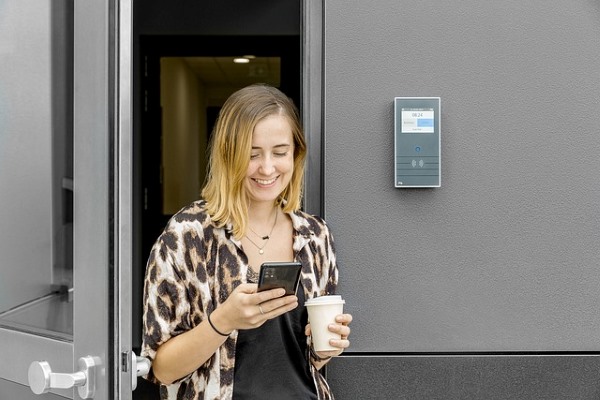Technology has become an important tool in supporting the development of individuals with autism. From enhancing communication skills to providing sensory stimulation, various apps and tools have been designed to meet the unique needs of those on the autism spectrum. This article explores the best Autism apps and technological tools that aid in the development of children and adults with autism, backed by statistics, studies, and expert recommendations.
Understanding Autism and the Role of Technology
Autism Spectrum Disorder (ASD) is a neurodevelopmental condition characterized by challenges in social interaction, communication, and repetitive behaviors. According to the Centers for Disease Control and Prevention (CDC), about 1 in 36 children in the United States is diagnosed with ASD . Given the diverse needs of individuals with autism, technology has emerged as an effective means of providing personalized support and intervention.
Key Autism Apps and Tools for Autism Development
1. Proloquo2Go
Proloquo2Go is a robust Augmentative and Alternative Communication (AAC) app that helps non-verbal individuals communicate more effectively. It provides a customizable user interface with symbols and text-to-speech options, making it easier for users to express their needs and emotions.
- Benefits: Enhances communication skills, promotes language development.
- Study: A study published in the Journal of Autism and Developmental Disorders found that AAC devices like Proloquo2Go significantly improved communication abilities in children with autism .
2. Autism Tracker Pro
Autism Tracker Pro is a comprehensive app that allows caregivers to monitor behaviors, mood, and health data. This tool helps in identifying patterns and triggers, enabling more effective management of autism symptoms.
- Benefits: Tracks daily activities, mood, and behavior to support better care.
- Reference: Autism Research journal highlights the importance of tracking behavioral patterns to tailor interventions for individuals with ASD .
3. Speech Blubs
Speech Blubs is an app designed to assist children with speech delays, including those with autism. It uses interactive videos and games to encourage speech and language development through imitation and play.
- Benefits: Supports speech therapy, improves articulation and vocabulary.
- Stats: According to the app’s developers, 90% of children using Speech Blubs show significant improvement in speech within 4-6 weeks .
4. Endless Reader
Endless Reader is an educational app that helps children with autism learn sight words and reading skills. The app features interactive animations that engage users and make learning enjoyable.
- Benefits: Enhances reading skills, supports early literacy development.
- Study: A study published in the Journal of Learning Disabilities found that interactive apps like this improve reading engagement and comprehension in children with autism .
5. Sensory Room
Sensory Room is a virtual reality app designed to create a calming environment for individuals with autism. It offers customizable sensory experiences that help reduce anxiety and sensory overload.
- Benefits: Provides sensory stimulation, reduces stress, promotes relaxation.
- Reference: Research in Frontiers in Psychology suggests that virtual reality tools like Sensory Room can effectively manage sensory sensitivities in individuals with ASD .
The Impact of Technology on Autism Development
Technology offers numerous benefits for individuals with autism, but its impact extends beyond just improving communication or learning. It also fosters independence, boosts self-esteem, and provides opportunities for social interaction. According to a survey conducted by Autism Speaks, parents reported that technology has positively impacted their child’s development and daily functioning.
Also Read: Know about PTSD in Kids and Teens: Complete Coping Mechanism
Frequently Asked Questions (FAQs) on Using Autism Apps
1. How can technology help individuals with autism? Technology can assist individuals with autism in various ways, including enhancing communication, supporting learning and development, managing behaviors, and providing sensory stimulation. Apps and tools tailored to the needs of those with autism can lead to significant improvements in daily functioning.
2. Are these apps and tools suitable for all age groups? Yes, many apps and tools are designed to be customizable and adaptable for different age groups. Whether it’s a child learning to speak or an adult managing anxiety, there are options available for various stages of life.
3. Are there any risks associated with using technology for autism? While technology offers many benefits, excessive screen time and reliance on digital tools can be a concern. It’s important to use these tools as part of a balanced approach, incorporating other therapies and activities to support overall development.
4. How can I choose the right app or tool for my child with autism? Selecting the right app or tool depends on the specific needs and developmental goals of the individual. Consulting with a therapist or healthcare provider can help in choosing the most appropriate technology.
5. Are there any free apps available for autism support? Yes, several free apps are available that offer valuable features for autism support. However, some premium apps with more advanced features may require a purchase or subscription.
The integration of technology into the lives of individuals with autism has opened up new avenues for growth and development. With a wide range of apps and tools available, caregivers and individuals with autism can find resources tailored to their unique needs. By leveraging these technological advancements, we can continue to support and enhance the quality of life for those on the autism spectrum.
References
- Journal of Autism and Developmental Disorders: “The Effectiveness of Augmentative and Alternative Communication Interventions for Children with Autism.” Link
- Autism Research: “Behavioral Tracking as a Tool for Personalized Autism Intervention.” Link
- Speech Blubs: “90% of Children Improve Speech Using Speech Blubs.” Link
- Journal of Learning Disabilities: “Impact of Interactive Learning Apps on Children with Autism.”
- Frontiers in Psychology: “Virtual Reality for Sensory Management in Autism Spectrum Disorder.”
- Autism Speaks: “Survey on the Impact of Technology in Autism Development.” Link





